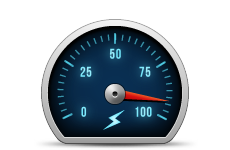How Our SEO Service to Get More Visitors along with Google's algorithm Update?

At present, With all the changes going on with Google's algorithm with our SEO Service, it's really crucial to understand what does and does not help your website. By the same token, you also need to know what will get you traffic and what will get you blacklisted by this mega search engine.
By now, you've probably heard about the Google's Penguin and Panda updates, but there have been more, though less talked about than these two. Basically Google is trying to keep search clean, which is great. Not so long ago you could "trick" the system (and many did) to get higher ranking in Google. So if you searched the term "vacuum" what you'd see could have been a mix of organic and black hat marketing tactics. It's the black hat that Google continues to go after. That said, some of us may be pushing promotional efforts that aren't the best, and we don't find out till our sites get hit. By then it's too late.
In an ideal world, your site should be able to weather any algorithm change that Google throws at you. If you aren't sure if your site is vulnerable to these changes, keep reading. Why should this matter to you? Because if you're hit in the Google sweep, it could drop your site in search and, thereby, affect your traffic, SEO, and business.
So let's take a look first at what not to do, and how you can build a stronger presence online.
What we should avoid to do in our present SEO service?
What not to do? First we need to figure out what you shouldn't be doing. Some of this will be obvious and some of it might be surprising.
1. Keyword stuffing
We all know that keyword stuffing is never a good idea. Keyword stuffing is a way of pushing a set or string of keywords in your website copy (generally on your homepage) over and over again so Google picks up on it and sends you consumers who are searching on those keywords. This might be the most lethal thing you can do right now, so make sure that your webpage (all pages, not just your homepage) is a solid blend of keywords and helpful information. If it's not, get it redone ASAP.
2. Link farms
A few weeks ago, I had a client ask me if she should buy into a service that would get her 5,000 new links for $500. I told her no. Why? Because getting too many links in a short period of time has always been a huge red flag for Google. Be careful if someone is promising you a lot of links over a short period of time; by "short" I mean overnight, or in a week or two. Even then, 5,000 links is still too much, in my view and the links (even if you should get them, which is questionable) won't be from sites that are related to your own so even if Google misses you on the sudden link increase, they will get you on the sites that aren't appropriate to your market.
3. Too many ads
Ads can be a great way to gain additional revenue, but too many ads could alert Google to a lack of content. How many is too many? Well, I think this falls into the: "If you're even asking this question, you likely have a problem" category. Generally, two or three ads on a page is fine -- but if you have more ads than content, you're creating a problem for yourself and your website.
4. Article marketing
While there are a lot of folks still doing this, I feel very hesitant to recommend it which is partially why we pulled it from our list of marketing ideas over a year ago. Article sites were hit very hard during Panda and this has not gotten better. If you do article marketing, tread very carefully.
Keep in mind that the above list is subject to change, so checking in periodically with sites like SEOmoz.org can really help you keep track of new Google updates.
7 things we should do more in our SEO service
How to Get Great Results? Now let's look at how to get great results and how to "algorithm proof" your website:
1. Fresh content
Blogging is still a great way to drive traffic and social engagement to your website. Having a blog is great, adding content to it weekly (at a minimum) is better. Some SEO experts say that you really need to be updating your blog twice weekly in order for it to even make a dent.
2. Links to big sites
It's always helpful when you have the occasional link in your blog post to external and high ranking sites.
3. Google+
While it seems like Google+ is "just another social network" it's not, and while I know it's a hassle to have one more place to update, try doing a search on a particular keyword and I think you'll be surprised by how many Google+ results show up. Google+ is fantastic for SEO and while you don't have to spend a ton of time with it, you should be active on this site. Here are a few quick tips to get you going:
We have both a personal page (mine) and our business page. We use both and both seem to show up high in searches.
Make sure your page is optimized. Complete the Google+ verification process, add your About Me section, use your keywords when describing your business or what you do.
Post regularly, videos are a great thing to post -- Google+ seems to love videos and, of course, they own YouTube so videos have that built-in bonus. Additionally, pictures and quality content are always great to post on there.
Add photos to your page and use the Google Scrapbook feature so that your page is visually appealing and mirrors your brand identity.
4. Diversity is key
Remember that it's never one thing that will drive traffic, but several things done over time. Your goal is to find those things that work well and do more of them. Don't put all of your SEO eggs into one basket. Make sure that you are doing three to five things to drive traffic. Why? Because if that one thing dries up (and given how many changes are happening online, it likely will) you need to keep the wheels of traffic turning with other options.
5. Not all traffic is created equal
Not all traffic will get you to conversion. You want to turn people into customers, that's your bottom line and surprisingly, you don't need a lot of traffic to do that. You need the right kind of traffic and a website that encourages them to take action.
6. Everything changes
You can't just put up a website and expect it to do the same great things for you all the time. Social metrics change, how people surf changes so you need to stay up to date on the changes that are happening. Staying in touch with key newsletters and/or websites is important to keeping track of what's happening out there.
7. Know your traffic stats and analytics
In order to get better, consistent traffic you need to know your analytics and you should be checking in with your site stats at least monthly, if not once a week. Good analytics (like Google analytics) will show you some pretty specific traffic numbers including what social sites are driving the most traffic.
Something to focus on is bounce rates. We get a lot of traffic from Facebook (a lot) but the bounce rates from Facebook are fairly high. We also promote the business on LinkedIn and don't get as much traffic (maybe half of what Facebook sends us) but the bounce rate from LinkedIn is much lower and people are spending more time on the site. What this tells us is that while Facebook remains a good target, the visitors coming from LinkedIn might be more focused and perhaps more serious about doing business with us.
Knowing these numbers will really help you to define where your best traffic is coming from so you can spend more time focusing there.
Getting traffic and seeing your business increase online is always a solid goal, but knowing what's working and where to best spend your time is even more important. Having a solid footing online isn't difficult, but it does some time, effort, and a little bit of research. Staying alert to the changes and being aware of your traffic numbers will help you grow your client base, year after year.
- Tags: Google Algorithms, Google+ SEO, SEO Service






